Making the Transcaucasian Trail
From The Field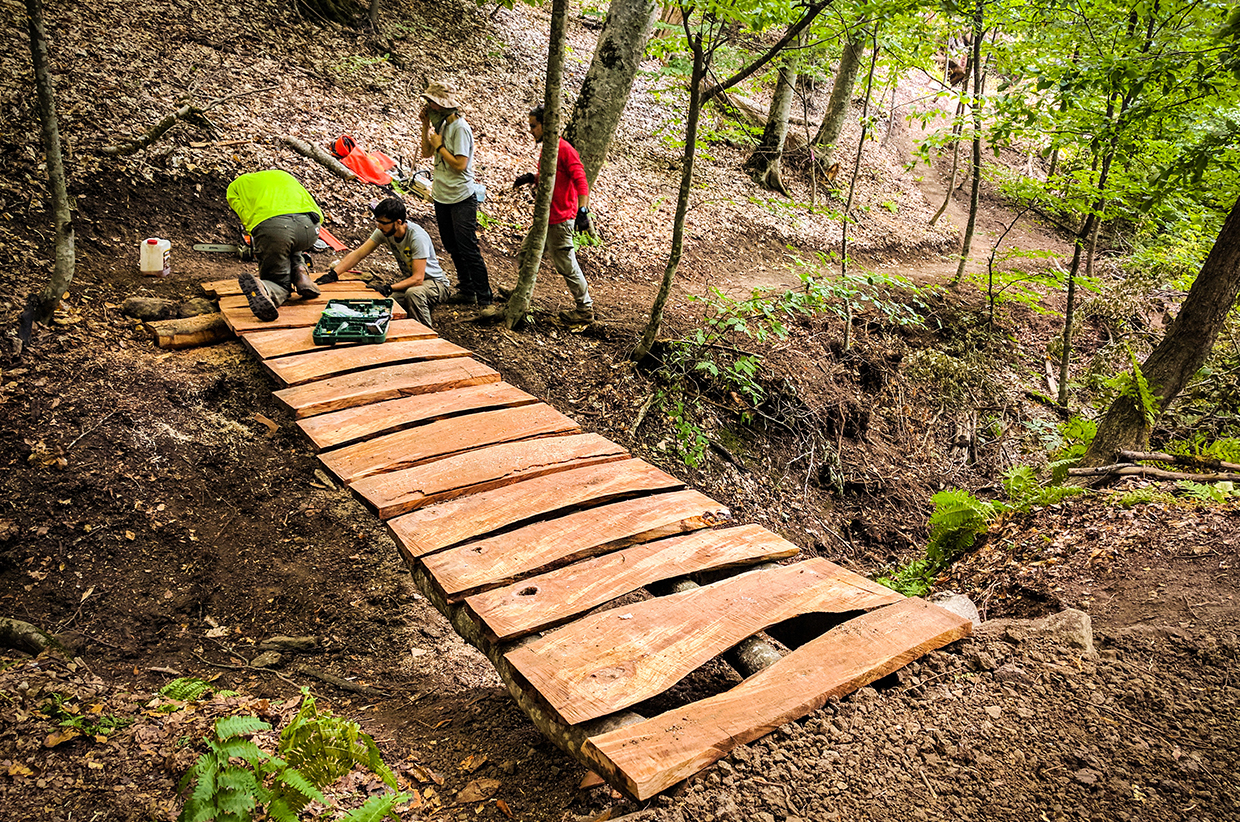
Photography by Tom Allen and Evan Burgeson
Val Ismaili joined a trail-building team on the new Transcaucasian Trail project. When complete, it will be the first purpose-built hiking trail that extends across the Greater and Lesser Caucasus Mountains of Armenia, Georgia, and Azerbaijan – one of the most biologically, culturally, and linguistically diverse regions in the world. 85km is now open.
Almost half a century ago, this battered and bruised GAZ-66 would have been used as a cargo truck for the Soviet Army. Now there we were, volunteers from the UK, France, New Zealand and the USA with a young generation of local Armenians, scattered about on the backbenches of the truck by every waterlogged pothole. The route we were driving was marked as the official trail of Dilijan National Park but was likely made by illegal loggers, evident by its steepness and directness. Garlic (our trail dog) nervously drooled on my lap.
We carried five days’ worth of food and water for fifteen people, three mountain bikes, and a collection of trail-building tools. Such was our setup as we headed into the lush, overgrown forest of Dilijan to contribute to the Transcaucasian Trail project and build the first purpose-built hiking trail in Armenia.
The Transcaucasian Trail (TCT) will be a world-class, long-distance hiking trail over 3,000km in length, following the Greater and Lesser Caucasus Mountains of Armenia, Georgia and Azerbaijan. Bordering Europe, Asia and the Middle East, the Caucasus is one of the most biologically, culturally and linguistically diverse regions in the world, yet one that few people have the chance to explore. A team of international hikers, cartographers and conservationists are designing a route that will cross the Caucasus. The team, co-led by British adventurer Tom Allen, embarked on the Transcaucasian Expedition of 2016 to survey existing trail conditions across the Caucasus. The decision was made to take on the daunting challenge of building new, purpose-built trails rather than use the existing ‘hiking trails’ that are typically muddy, waterlogged and torn-apart 4×4 tracks.
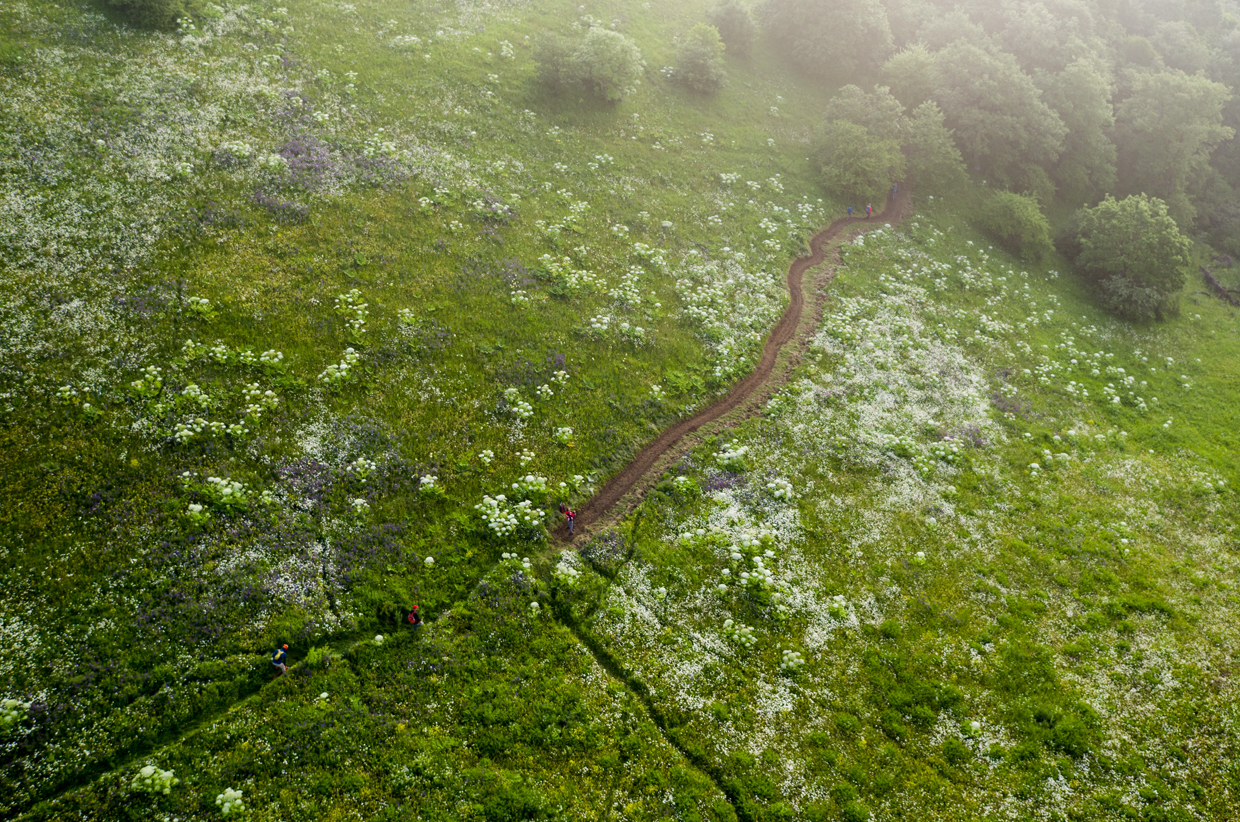
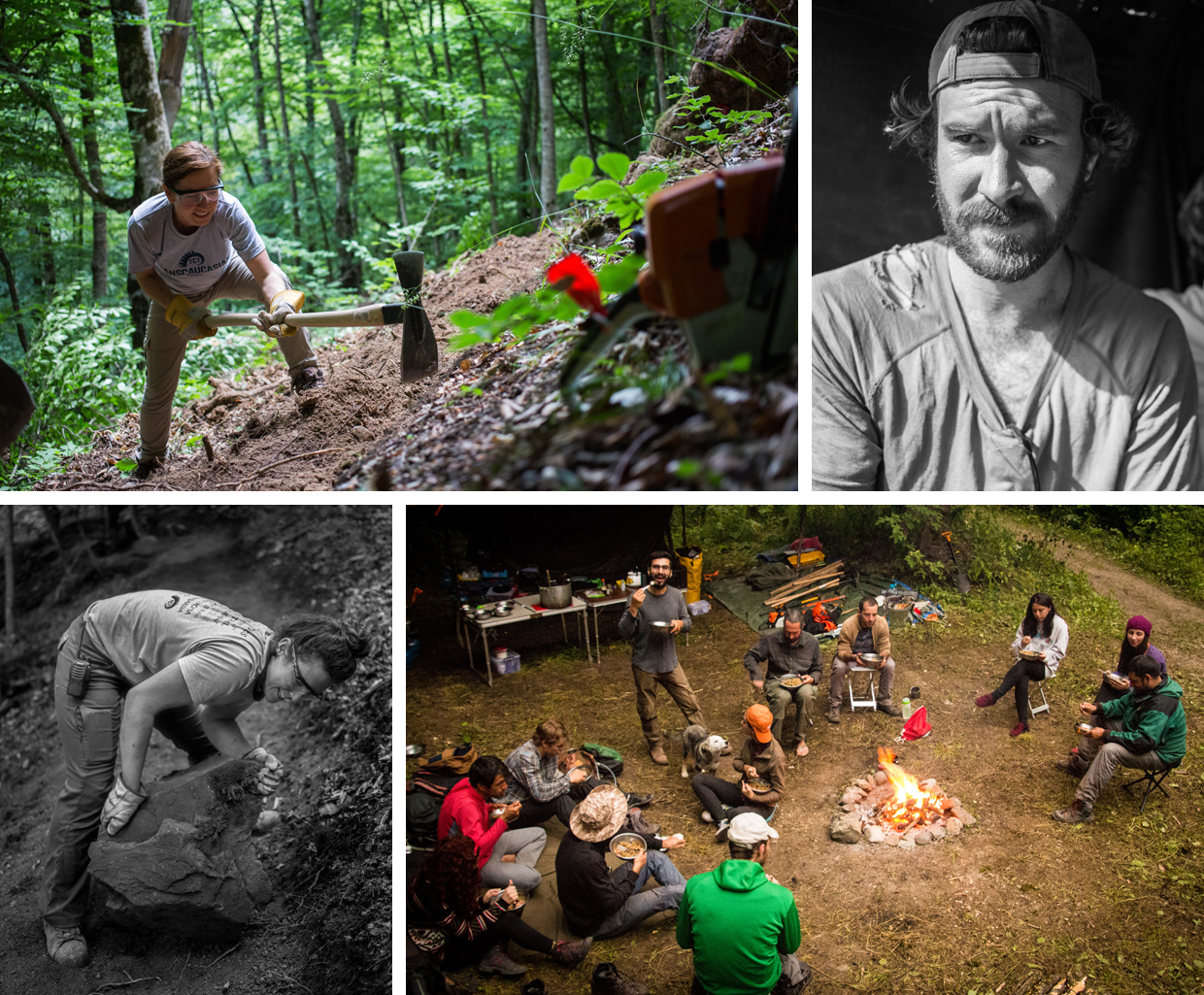
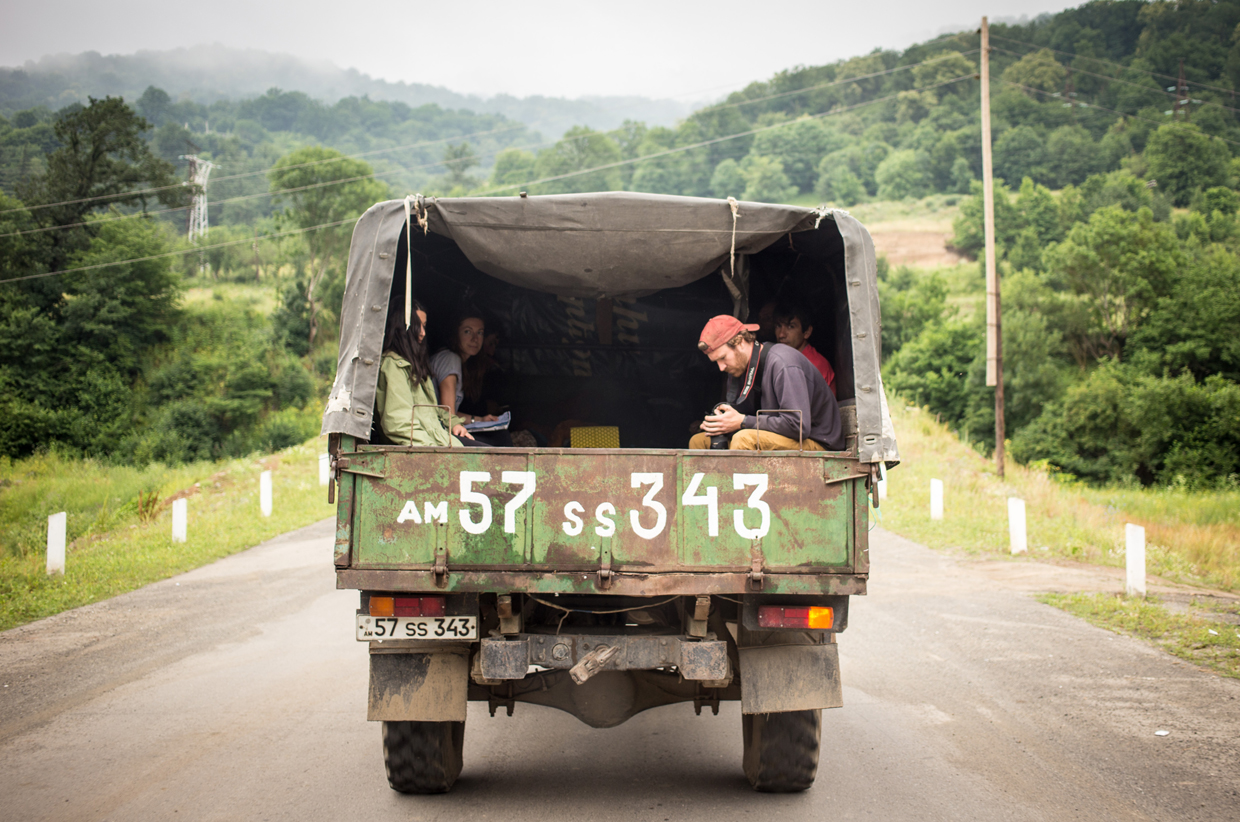
Work in Armenia began in mid-June 2017 with 15 of us bundled into the back of that Soviet truck, heading for the tree-covered mountains of Dilijan National Park. We made some mistakes during that first stint of trail work – primarily, setting our camp in a small forest clearing near a creek to avoid the heat of the sun up in the meadow, but quickly figured that heat is better than a relentless onslaught of midges. Lesson learnt.
We had the guidance of full-time Californian trail-builder Hans Keifer to design the route and teach us the process of building a sustainable trail. The process began with Hans scouting and flagging the upper edge of the trail every few metres. Hot on his heels would be a group of two to four people with rakes and McLeods, two-sided blades with forks on one side for clearing loose vegetation and fallen leaves. A sharp edge on the other side is used to cut small roots and clear away the topsoil, leaving a clearance of about six feet wide for the digging process to begin.
The first cut is made with the Pulaski, a powerful tool combining an axe and adze, to clear out roots the size of your leg or work away at tough clay soils. A Rhino tool featuring a wide adze is used to continue the widening of the trail and spread the loosened soil. A lengthy, exhausting process of repeated Pulaski-Rhino cycles follow until a trail of 3.5ft width and maximum grade of 10 per cent is created, ideally sloping out at 4 per cent to allow water runoff.
It is hard, slow-moving, manual labour. Fifteen of us digging for seven hours a day results in 100-300m of trail, depending on the terrain and soil type. Despite the adversity, it’s incredibly gratifying to experience the gradual lengthening of the trail day by day. As the trail begins to stretch further through the Caucasus, I began to visualise future hikers enjoying the fruits of our labour.
As someone who has spent a lot of time on hiking trails, I had previously never considered the process or the amount of work that goes into building one. That is what a good trail does; it allows the hiker to experience the surrounding environment, culture, and people around them without being distracted by poor execution of the intricacies of trail design that can lead to waterlogging, collapse and overgrowth. With this in mind, the work continues by installing trail markers and constructing bridges made from locally sourced materials, and – crucially – drawing in local hikers who maintain the trail with their foot traffic.
However, the trail-building experience isn’t all hard work and no fun. Our evenings were spent slacklining, learning traditional Armenian dance, telling each other stories of past adventures, as well as mountain biking down the fresh trails we had just built. I walked the full length of the newly formed path on my final day in Dilijan. It was an incredibly special experience as I recalled the conversations I’d had with the other volunteers, the jokes we laughed at, and the sections of endless roots and rocks that took hours to clear even just 20m of trail. As proud as I am of being involved in the process of building this trail that will allow others to experience the Caucasus, it is the memories and experiences I had with the other volunteers that will keep me going back to Dilijan to visit and extend that little stretch of dirt.
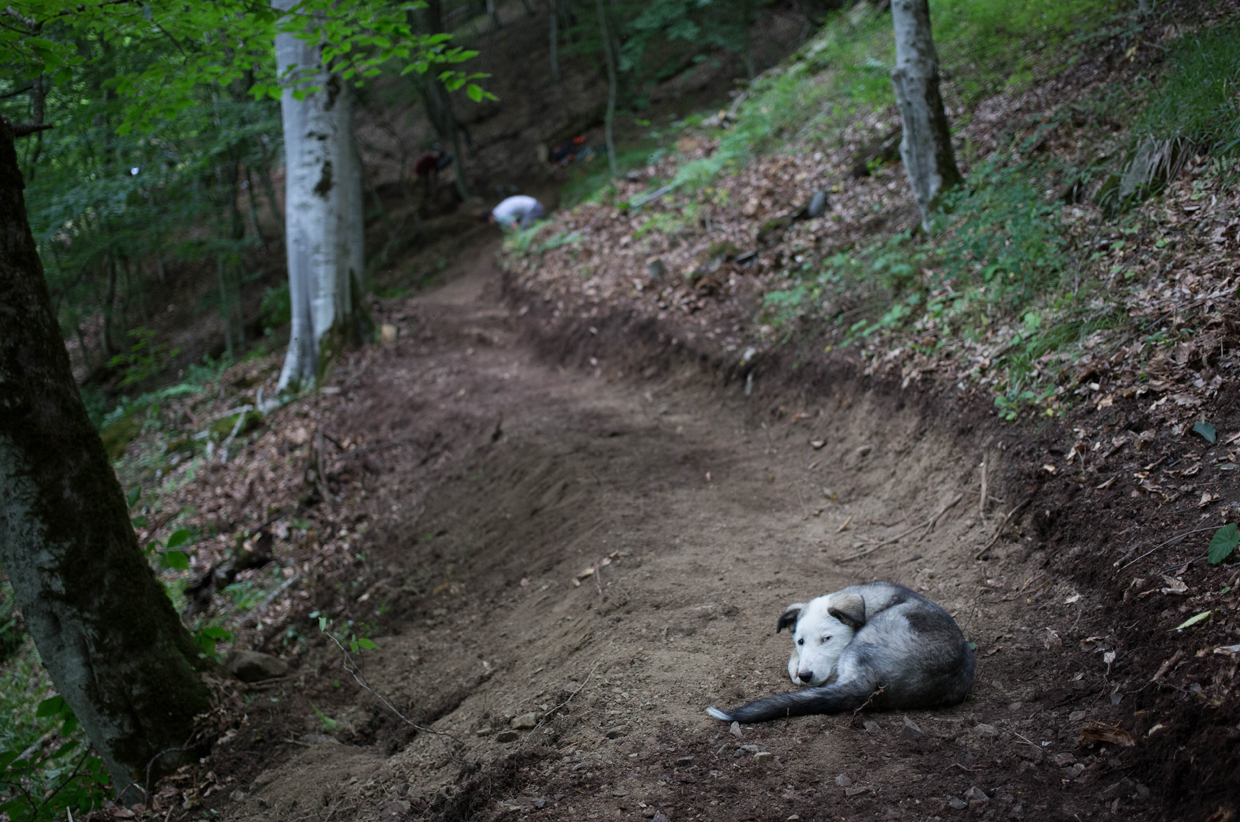
A full 85km of the Transcaucasian Trail is now available to hike. The route takes you on a journey through the very best the region has to offer, focused around the spa town of Dilijan and the surrounding mountains of Dilijan National Park, as well as taking in iconic historical sights and lesser-known natural and cultural sites. Find all the information here: https://transcaucasiantrail.org/en/hike/dilijan-national-park-armenia/
Photography by Tom Allen and Evan Burgeson


